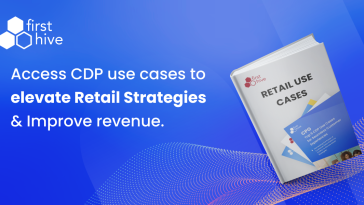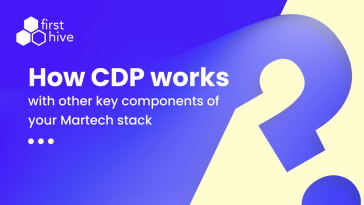Improved customer service levels, better customer retention, higher conversion rates and an eventually improved overall customer lifetime value (CLV) are some of the reasons a ‘Single View of Customer’ is most needed.
Econsultancy also pointed out that, “Organisationally a Single Customer View (SCV) will also lead to better communication between traditionally separate teams and a more cooperative approach to customer service.”
Customer Data Platforms provide marketers a Single Customer View that helps in building personalized relationships as well as design personalized campaigns. SCVs have melted the ‘siloed approach’ that created dead ends to progress.
As a marketer, if you are trying to achieve a Single Customer View, then you would need to ensure that all your marketing sources of information and interaction are included in the scope. The problem is even bigger. You need to ensure that these tools and points of interaction talks to each other over a complex web of customer communication. They need to be able to process customer data in a way that helps in relevant, real-time response and feeds data back into an information system for further enrichment.
What Does ‘Single Customer View’ Mean To A Marketer?
Easy Attribution
Across multiple channels, it is tiring to identify the points of conversion and its causes. The most important question about ‘which channel is more reaping than others?’ is left unanswered if attribution is not activated. Another important question is about “Which customer type is most converting among the explored marketing channels?”.
A single view also talks about customer behavior which further validates and explains each attribution.
Omni-channel vs multi-channel
The term multi-channel can get shaky when your Single Customer View does not include offline sources. Channels such as voice, events, point-of-sale, direct mail, etc are left to the universe of dark data. But, a holistic CDP that provides a single view also configures and draws data from the offline marketing sources and channels for ongoing customer data enrichment.
Personalization
The most enticing reason to use a single view of a customer is the ability to personalize. Through collective processes of cleansing, matching, merging, and de-duplicating all customer touchpoints, online and offline, that a CDP brings together, improves personalization.
Unique Customer Experience
Especially in the B2C sectors such as retail and BFSI, owning a single view becomes imperative, for the sheer scale and volume that a marketer needs to handle. To create a unique experience and build a loyal relationship between the customer and the brand is dependant on how much the brand knows about its every customer.
A CDP & Its Marketing Sources of Information & Interaction
The multi-channel scope of a single customer view is good, but an omnichannel strategy is great. This means your CDP should be able to draw, ingest, process, and enrich data from across both online and offline marketing channels to achieve a single view.
Online Data Sources include:
| Website & Mobile | Advertisement | Interaction Systems | Information Systems | Automation | Analytics | Other |
| Content Management System (CMS)
Mobile App SEO |
Social Media
Paid Media SMS Retargeting ads Programmatic ads |
Social Media
Webinars Chat & Online conversations Checkout Carts Customer Support |
CRM
ERP DMP Internal communication and information systems |
Landing Pages
DW/DL Email marketing Marketing automation tools |
Web analytics
Mobile analytics Attribution |
Cloud Telephony
Localization & Personalization Tools IoT & Smart Devices |
Offline Data Sources include
- BTL Campaigns/ D2C
- Channel Partner Transaction systems
- PoS
Data Types Attributed to Customer Data
To achieve a single view, customer data is extracted in different formats. This is not just about data being numeric, date, alphanumeric, and so on, but also about classifying data based on
- Demographics
- Personalities
- Product and Brand Engagement
- Shopping & Purchase Behavior
- Lifestyle
- IoT & Smart Device consumption
While these sources and data types only provide a high-level bifurcation of the scope of an omnichannel strategy, there is always something new to be added. It is not just the channels but also, the customer journey. The path that each customer goes through on one channel is different from another channel for the same product. This indicates that the marketer’s need for a single view of the customer would simplify the complex web of marketing channels.








